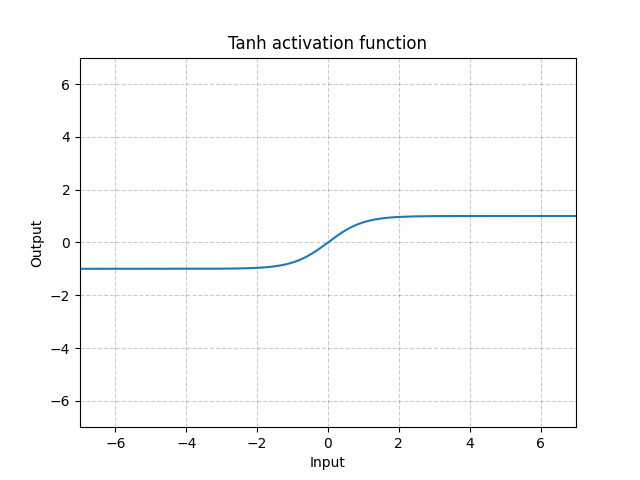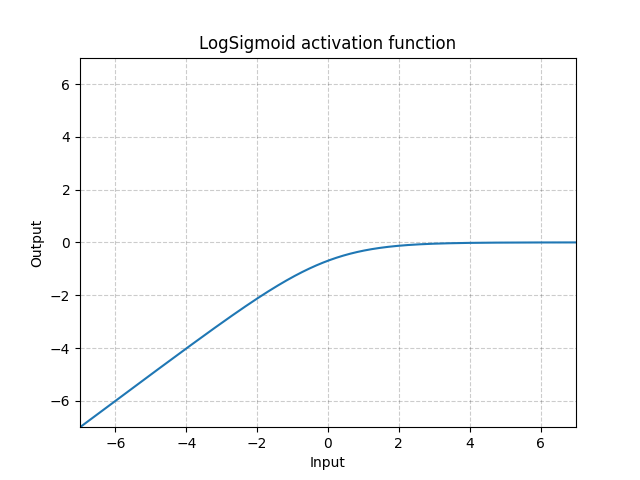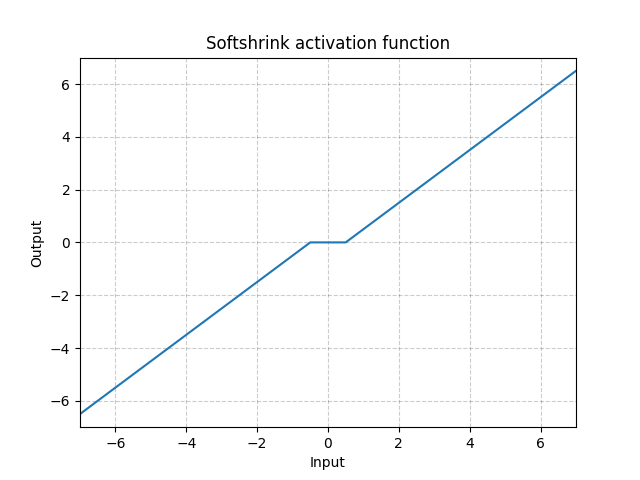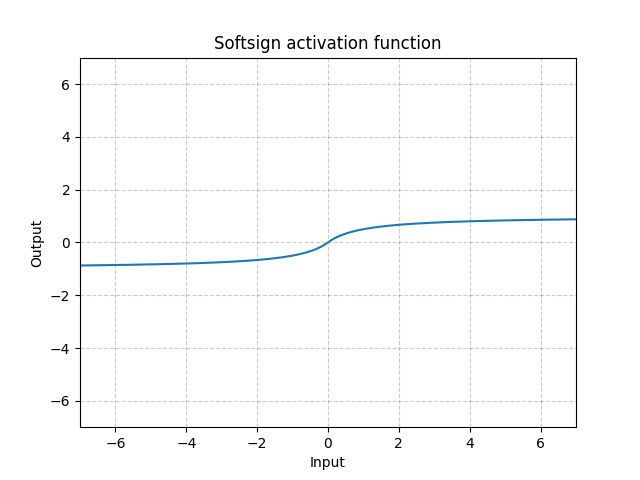1. 非线性激活函数
torch.nn.ReLU(inplace=False):对输入运用修正线性单元函数 R e L U ( x ) = m a x ( 0 , x ) {ReLU}(x)= max(0, x) ReLU(x)=max(0,x),如果参数inplace=True,执行本地操作
import torch
from torch import nn
m = nn.ReLU()
input = torch.randn(2)
print(input)
print(m(input))
# tensor([ 1.4964, -0.6114])
# tensor([1.4964, 0.0000])
torch.nn.ReLU6(inplace=False):对输入的每一个元素运用函数 R e L U 6 ( x ) = m i n ( m a x ( 0 , x ) , 6 ) {ReLU6}(x) = min(max(0,x), 6) ReLU6(x)=min(max(0,x),6),如果参数inplace=True,执行本地操作
import torch
from torch import nn
m = nn.ReLU6()
input = torch.randn(6) * 3
print(input)
# tensor([ 5.7702, 6.3270, -0.8260, -0.9636, -0.7332, 4.8841])
print(m(input))
# tensor([5.7702, 6.0000, 0.0000, 0.0000, 0.0000, 4.8841])
torch.nn.ELU(alpha=1.0, inplace=False):对输入的每一个元素运用函数 f ( x ) = m a x ( 0 , x ) + m i n ( 0 , a l p h a ∗ ( e x − 1 ) ) f(x) = max(0,x) + min(0, alpha * (e^x - 1)) f(x)=max(0,x)+min(0,alpha∗(ex−1))
import torch
from torch import nn
m = nn.ELU()
input = torch.randn(6)
print(input)
# tensor([ 1.6605, 0.4354, -1.0361, -0.8184, 0.8769, -0.1402])
print(m(input))
# tensor([ 1.6605, 0.4354, -0.6452, -0.5589, 0.8769, -0.1308])
torch.nn.PReLU(num_parameters=1, init=0.25):对输入的每一个元素运用函数 P R e L U ( x ) = m a x ( 0 , x ) + a ∗ m i n ( 0 , x ) PReLU(x) = max(0,x) + a * min(0,x) PReLU(x)=max(0,x)+a∗min(0,x), a 是一个可学习参数。当没有声明时, nn.PReLU()在所有的输入中只有一个参数 a;如果是 nn.PReLU(nChannels), 每个输入的每一个通道都有一个a。
注意:当为了表现更佳的模型而学习参数 a 时不要使用权重衰减(weight decay)
参数:
(1)num_parameters:需要学习的 a 的个数,默认等于 1
(2)init:a的初始值,默认等于0.25
import torch
from torch import nn
m = nn.PReLU()
input = torch.randn(6)
print(input)
# tensor([ 0.0759, 1.0663, -1.4585, -0.3561, 0.4026, -0.4737])
print(m(input))
# tensor([ 0.0759, 1.0663, -0.3646, -0.0890, 0.4026, -0.1184], grad_fn=<PreluBackward>)
torch.nn.LeakyReLU(negative_slope=0.01, inplace=False):对输入的每一个元素运用 f ( x ) = m a x ( 0 , x ) + n e g a t i v e _ s l o p e ∗ m i n ( 0 , x ) f(x) = max(0, x) + {negative\_slope} * min(0, x) f(x)=max(0,x)+negative_slope∗min(0,x)
参数:
(1):negative_slope:控制负斜率的角度,默认等于 0.01
(2):选择是否进行覆盖运算
import torch
from torch import nn
m = nn.LeakyReLU()
input = torch.randn(6)
print(input)
# tensor([ 0.9038, 1.1409, -0.6492, 0.5056, 0.7463, -1.3049])
print(m(input))
# tensor([ 0.9038, 1.1409, -0.0065, 0.5056, 0.7463, -0.0130])
torch.nn.Threshold(threshold, value, inplace=False):y=x,if x>=threshold y=value,if x<threshold
参数:
(1)threshold:阈值
(2)value:输入值小于阈值则会被 value 代替
(3)inplace:选择是否进行覆盖运算
import torch
from torch import nn
m = nn.Threshold(0.1, 10)
input = torch.randn(6)
print(input)
# tensor([ 0.7639, 0.1061, -0.6002, -0.4351, -0.2613, 1.8871])
print(m(input))
# tensor([ 0.7639, 0.1061, 10.0000, 10.0000, 10.0000, 1.8871])
torch.nn.Hardtanh(min_value=-1, max_value=1, inplace=False):f(x)=+1,if x>1; f(x)=−1,if x<−1; f(x)=x,otherwise。线性区域的范围[-1,1]可以被调整
参数:
(1)min_value:线性区域范围最小值
(2)max_value:线性区域范围最大值
(3)inplace:选择是否进行覆盖运算
import torch
from torch import nn
m = nn.Hardtanh()
input = torch.randn(6)
print(input)
# tensor([-0.3335, -1.5161, -1.7645, 0.1050, 1.5336, 0.5723])
print(m(input))
# tensor([-0.3335, -1.0000, -1.0000, 0.1050, 1.0000, 0.5723])
torch.nn.Sigmoid():对每个元素运用 Sigmoid 函数, Sigmoid 定义如下:
f ( x ) = 1 1 + e − x f(x)=\frac{1}{1+e^{−x}} f(x)=1+e−x1
import torch
from torch import nn
m = nn.Sigmoid()
input = torch.randn(6)
print(input)
# tensor([ 0.4206, -0.5932, 0.2186, -1.1800, 0.0856, 0.2458])
print(m(input))
# tensor([0.6036, 0.3559, 0.5544, 0.2351, 0.5214, 0.5611])
torch.nn.Tanh():对输入的每个元素, f ( x ) = e x − e − x e x + e − x f(x)=\frac{e^{x}−e^{−x}}{e^{x}+e^{−x}} f(x)=ex+e−xex−e−x

import torch
from torch import nn
m = nn.Tanh()
input = torch.randn(6)
print(input)
# tensor([-1.4601, -0.1697, 0.7304, -0.7290, 1.1595, 0.0045])
print(m(input))
# tensor([-0.8977, -0.1681, 0.6233, -0.6225, 0.8209, 0.0045])
torch.nn.LogSigmoid():对输入的每个元素, L o g S i g m o i d ( x ) = l o g ( 1 / ( 1 + e − x ) ) LogSigmoid(x) = log( 1 / ( 1 + e^{-x})) LogSigmoid(x)=log(1/(1+e−x))

import torch
from torch import nn
m = nn.LogSigmoid()
input = torch.randn(6)
print(input)
# tensor([-1.2238, -0.1355, -0.4778, 0.9836, -0.3558, 2.2939])
print(m(input))
# tensor([-1.4817, -0.7632, -0.9603, -0.3177, -0.8868, -0.0961])
torch.nn.Softplus(beta=1, threshold=20):对每个元素运用 Softplus 函数, Softplus 定义如下: f ( x ) = 1 β ∗ l o g ( 1 + e β ∗ x ) f(x)=\frac{1}{\beta}∗log(1+e^{\beta∗x}) f(x)=β1∗log(1+eβ∗x)
Softplus 函数是 ReLU 函数的平滑逼近, Softplus 函数可以使得输出值限定为正数。
为了保证数值稳定性,线性函数的转换可以使输出大于某个值。

参数:
(1)beta: Softplus 函数的 beta 值
(2) threshold:阈值
import torch
from torch import nn
m = nn.Softplus()
input = torch.randn(6)
print(input)
# tensor([ 0.3301, 1.3399, -0.6725, -1.7277, 0.1790, 1.7915])
print(m(input))
# tensor([0.8717, 1.5725, 0.4124, 0.1636, 0.7866, 1.9457])
torch.nn.Softshrink(lambd=0.5):对每个元素运用 Softshrink 函数, Softshrink 函数定义如下:
S o f t S h r i n k a g e ( x ) = { x − λ x > λ x + λ x < − λ 0 o t h e r w i s e SoftShrinkage(x)= \begin{cases} x-\lambda& x>\lambda\\ x+\lambda& x<-\lambda\\ 0& otherwise\end{cases} SoftShrinkage(x)=⎩⎪⎨⎪⎧x−λx+λ0x>λx<−λotherwise

import torch
from torch import nn
m = nn.Softshrink()
input = torch.randn(6)
print(input)
# tensor([-0.1473, -1.0722, 2.3532, -0.6775, 0.1545, 0.1195])
print(m(input))
# tensor([ 0.0000, -0.5722, 1.8532, -0.1775, 0.0000, 0.0000])
torch.nn.Softsign():逐元素使用以下操作: S o f t S i g n ( x ) = x 1 + ∣ x ∣ SoftSign(x)=\frac{x}{1+|{x}|} SoftSign(x)=1+∣x∣x

import torch
from torch import nn
m = nn.Softsign()
input = torch.randn(6)
print(input)
# tensor([-1.1256, 0.6065, -1.7092, 0.5611, 0.7284, 1.5538])
print(m(input))
# tensor([-0.5295, 0.3775, -0.6309, 0.3594, 0.4214, 0.6084])
torch.nn.Softmin(dim=None):对 n 维输入张量运用 Softmin 函数,将张量的每个元素缩放到(0,1)区间且和为 1。
S o f t m i n ( x i ) = e − x i ∑ j e − x j Softmin(x_i)=\frac{e^{-x_i}}{\sum_je^{-x_j}} Softmin(xi)=∑je−xje−xi
import torch
from torch import nn
m = nn.Softmin()
input = torch.randn(2, 3)
print(input)
# tensor([[-0.9406, -0.7574, -0.2140],[ 1.0005, -1.2016, 0.1894]])
print(m(input))
# tensor([[0.4318, 0.3595, 0.2088],[0.0813, 0.7356, 0.1830]])
torch.nn.Softmax(dim=None):对 输入张量的dim维度运用 Softmax 函数,将张量的dim维度每个元素缩放到( 0,1)区间且和为 1。 Softmax 函数定义如下: S o f t m a x ( x i ) = e x i ∑ j e x j Softmax(x_i)=\frac{e^{x_i}}{\sum_je^{x_j}} Softmax(xi)=∑jexjexi
import torch
from torch import nn
m = nn.Softmax()
input = torch.randn(2, 3)
print(input)
# tensor([[ 1.1853, -0.9699, -0.6635], [ 0.2013, 0.8596, -2.3155]])
print(m(input))
# tensor([[0.7854, 0.0910, 0.1236],[0.3320, 0.6412, 0.0268]])
torch.nn.LogSoftmax(dim=None):对 输入张量的dim维度运用 LogSoftmax函数,函数定义如下: L o g S o f t m a x ( x i ) = l o g ( e x i ∑ j e x j ) LogSoftmax(x_i)=log(\frac{e^{x_i}}{\sum_je^{x_j}}) LogSoftmax(xi)=log(∑jexjexi)
import torch
from torch import nn
m = nn.LogSoftmax()
input = torch.randn(2, 3)
print(input)
# tensor([[ 0.3179, -1.6143, -0.0478],[ 0.7923, -1.6657, -2.5130]])
print(m(input))
# tensor([[-0.6090, -2.5411, -0.9746],[-0.1154, -2.5733, -3.4206]])
2.归一化层
torch.nn.BatchNorm1d(num_features, eps=1e-05, momentum=0.1, affine=True, track_running_stats=True, device=None, dtype=None):
输入尺寸: ( N , C ) o r ( N , C , L ) (N,C) or (N, C, L) (N,C)or(N,C,L)
输出尺寸: ( N , C ) o r ( N , C , L ) (N,C) or (N, C, L) (N,C)or(N,C,L) (与输入尺寸相同)
在训练时,该层计算每次输入的均值与方差,并进行移动平均。移动平均默认的动量值为 0.1。
在验证时,训练求得的均值/方差将用于标准化验证数据。
重要参数:
(1)momentum: 动态均值和动态方差所使用的动量。默认为 0.1。
(2)affine: 一个布尔值,当设为 true,给该层添加可学习的仿射变换参数
import torch
from torch import nn
m1 = nn.BatchNorm1d(5) # 默认有可学习参数
m2 = nn.BatchNorm1d(5,affine=False) # 没有可学习参数
input = torch.randn(2, 5)
print(input)
# tensor([[-0.1493, 0.6807, 0.2940, 1.6287, -0.9222],
# [-1.7403, -0.7764, -0.6606, -0.2361, -0.1404]])
print(m1(input))
# tensor([[ 1.0000, 1.0000, 1.0000, 1.0000, -1.0000],
# [-1.0000, -1.0000, -1.0000, -1.0000, 1.0000]],
# grad_fn=<NativeBatchNormBackward>)
print(m2(input))
# tensor([[ 1.0000, 1.0000, 1.0000, 1.0000, -1.0000],
# [-1.0000, -1.0000, -1.0000, -1.0000, 1.0000]])
torch.nn.BatchNorm2d(num_features, eps=1e-05, momentum=0.1, affine=True, track_running_stats=True, device=None, dtype=None):对小批量(mini-batch)3d 数据组成的 4d 输入进行批标准化(Batch Normalization)操作
输入尺寸: ( N , C , H , W ) (N,C,H,W) (N,C,H,W)
输出尺寸: ( N , C , H , W ) (N,C,H,W) (N,C,H,W) (与输入尺寸相同)
在训练时,该层计算每次输入的均值与方差,并进行移动平均。移动平均默认的动量值为 0.1。
在验证时,训练求得的均值/方差将用于标准化验证数据。
重要参数:
(1)momentum: 动态均值和动态方差所使用的动量。默认为 0.1。
(2)affine: 一个布尔值,当设为 true,给该层添加可学习的仿射变换参数
输入:( N, C, H, W) - 输出:( N, C, H, W)(输入输出相同)
import torch
from torch import nn
m1 = nn.BatchNorm2d(5) # 默认有可学习参数
m2 = nn.BatchNorm2d(5,affine=False) # 没有可学习参数
input = torch.randn(2, 5, 35, 45)
print(m1(input).shape)
# torch.Size([2, 5, 35, 45])
print(m2(input).shape)
# torch.Size([2, 5, 35, 45])
torch.nn.BatchNorm3d(num_features, eps=1e-05, momentum=0.1, affine=True):对小批量(mini-batch)4d 数据组成的 5d 输入进行批标准化(Batch Normalization)操作
参数:
(1)num_features: 来自期望输入的特征,该期望输入的大小(N, C, D, H, W)
(2)eps: 为保证数值稳定性(分母不能趋近或取 0) ,给分母加上的值。默认为 1e-5。
(3)momentum: 动态均值和动态方差所使用的动量。默认为 0.1。
(4)affine: 一个布尔值,当设为 true,给该层添加可学习的仿射变换参数。即 α 与 γ \alpha与\gamma α与γ
输入:( N, C, D, H, W) - 输出:( N, C, D, H, W)(输入输出相同)
import torch
from torch import nn
m1 = nn.BatchNorm3d(3) # 默认有可学习参数
m2 = nn.BatchNorm3d(3,affine=False) # 没有可学习参数
input = torch.randn(2, 3, 35, 45, 10)
print(m1(input).shape)
# torch.Size([2, 3, 35, 45, 10])
print(m2(input).shape)
# torch.Size([2, 3, 35, 45, 10])
3.线性层
torch.nn.Linear(in_features, out_features, bias=True):对输入数据做线性变换: y=Ax+b
参数:
(1)in_features - 每个输入样本的大小
(2)out_features - 每个输出样本的大小
(3)bias - 若设置为 False,这层不会学习偏置。默认值: True
输入大小:(N,in_features)
输出大小:(N,out_features)
import torch
from torch import nn
m = nn.Linear(20, 30)
input = torch.randn(12, 20)
print(m(input).shape)
# torch.Size([12, 30])
4.Dropout 层
torch.nn.Dropout(p=0.5, inplace=False):随机将输入张量中部分元素设置为 0。对于每次前向调用,被置 0 的元素都是随机的。
参数:
(1)p - 将元素置 0 的概率。默认值: 0.5
(2)in-place - 若设置为 True,会在原地执行操作。默认值: False
形状:
(1)输入: 任意。输入可以为任意形状。
(2)输出: 输出和输入形状相同。
import torch
from torch import nn
m = nn.Dropout(p=0.2)
input = torch.randn(20, 16)
print(m(input).shape)
# torch.Size([20, 16])
torch.nn.Dropout2d(p=0.5, inplace=False):随机将输入张量中整个通道设置为 0。对于每次前向调用,被置 0 的通道都是随机的,通常输入来自 Conv2d 模块。
参数:
(1)p - 将元素置 0 的概率。默认值: 0.5
(2)in-place - 若设置为 True,会在原地执行操作。默认值: False
形状:
(1) 输入:(N,C,H,W)
(2) 输出:(N,C,H,W)(与输入形状相同)
import torch
from torch import nn
m = nn.Dropout2d(p=0.2)
input = torch.randn(20, 16, 32, 32)
print(m(input).shape)
# torch.Size([20, 16, 32, 32])
torch.nn.Dropout3d(p=0.5, inplace=False):随机将输入张量中整个通道设置为 0。对于每次前向调用,被置 0 的通道都是随机的,通常输入来自 Conv3d 模块。
参数:
(1)p - 将元素置 0 的概率。默认值: 0.5
(2)in-place - 若设置为 True,会在原地执行操作。默认值: False
形状:
(1) 输入: (N,C,D,H,W)
(2) 输出: (N,C,D,H,W)(与输入形状相同)
import torch
from torch import nn
m = nn.Dropout3d(p=0.2)
input = torch.randn(20, 16, 4, 32, 32)
print(m(input).shape)
# torch.Size([20, 16, 4, 32, 32])
5.距离函数
torch.nn.PairwiseDistance(p=2, eps=1e-06):按批计算向量 v1, v2 之间的距离
参数:
(1)x (Tensor): 包含两个输入 batch 的张量
(2)p (real): 范数次数,默认值: 2
形状:
(1)输入: (N,D),其中 D=向量维数
(2)输出: (N,1)
import torch
from torch import nn
pdist = nn.PairwiseDistance(2)
input1 = torch.arange(12).reshape(3,4)
input2 = torch.arange(12).reshape(3,4)
print(input1, input2)
output = pdist(input1, input2)
print(output)
# tensor([2.0000e-06, 2.0000e-06, 2.0000e-06])
6.损失函数
基本用法:
criterion = LossCriterion() #构造函数有自己的参数
loss = criterion(x, y) #调用标准时也有参数
计算出来的结果已经对 mini-batch 取了平均。
torch.nn.L1Loss(size_average=None, reduce=None, reduction='mean'):创建一个衡量输入 x(模型预测输出)和目标 y 之间差的绝对值的平均值的标准。
l o s s ( x , y ) = 1 n ∑ ∣ x i − y i ∣ loss(x,y)=\frac{1}{n}\sum|x_i-y_i| loss(x,y)=n1∑∣xi−yi∣
形状:
x尺寸:(N,∗) ,*表示任意值
y尺寸:同上
输出尺寸:标量,如果reduction=none,那么输出尺寸与输入的x或y尺寸相同
如果在创建L1Loss实例的时候在构造函数中传入size_average=False,那么求出来的绝对值的和将不会除以 n。
import torch
from torch import nn
loss = nn.L1Loss()
input = torch.randn(3, 5)
target = torch.randn(3, 5)
output = loss(input, target)
print(output)
# tensor(1.1191)
loss = nn.L1Loss(reduction="none")
output = loss(input, target)
print(output)
# tensor([[2.6041, 0.7351, 3.2098, 0.6427, 1.4476],
# [1.3020, 0.0344, 1.3406, 0.4832, 0.7455],
# [0.4987, 0.1257, 0.3320, 2.7098, 0.5757]])
print(output.sum())
# tensor(16.7869)
print(output.mean())
# tensor(1.1191)
torch.nn.MSELoss(size_average=True):创建一个衡量输入 x(模型预测输出)和目标 y 之间均方误差标准。
l o s s ( x , y ) = 1 n ∑ ( x i − y i ) 2 loss(x,y)=\frac{1}{n}\sum(x_i-y_i)^2 loss(x,y)=n1∑(xi−yi)2
形状:
x尺寸:(N,∗) ,*表示任意值
y尺寸:同上
输出尺寸:标量,如果reduction=none,那么输出尺寸与输入的x或y尺寸相同
如果在创建L2Loss实例的时候在构造函数中传入 size_average=False,那么求出来的绝对值的和将不会除以 n。
import torch
from torch import nn
loss = nn.MSELoss()
input = torch.randn(3, 5)
target = torch.randn(3, 5)
output = loss(input, target)
print(output)
# tensor(2.8648)
loss = nn.MSELoss(reduction="none")
output = loss(input, target)
print(output)
# tensor([[3.1276e-01, 1.6991e+00, 2.4922e-03, 1.1089e-01, 3.8143e-01],
# [5.8569e-01, 1.1830e+00, 1.4926e+00, 7.7746e+00, 9.6769e-04],
# [8.2330e+00, 2.9971e+00, 5.6262e+00, 4.6929e-01, 1.2102e+01]])
print(output.sum())
# tensor(42.9715)
print(output.mean())
# tensor(2.8648)
torch.nn.CrossEntropyLoss(weight=None, size_average=True):此标准将 LogSoftMax 和 NLLLoss 集成到一个类中,当训练一个多类分类器的时候,这个方法是十分有用的。
(1)weight(tensor): 1D tensor, n 个元素,分别代表 n 类的权重,如果你的训练样本很不均衡的话,是非常有用的。默认值为 None。
(2)input : 包含每个类的得分, 2D tensor,shape 为 batch*n
(3)target: 大小为 n 的 1D tensor,包含类别的索引(0 到 n-1)。
import torch
from torch import nn
loss = nn.CrossEntropyLoss()
input = torch.randn(3, 5)
target = torch.empty(3, dtype=torch.long).random_(5)
print(target.shape)
# torch.Size([3])
output = loss(input, target)
print(output)
# tensor(2.3181)
torch.nn.NLLLoss(weight=None, size_average=True):负的log likelihood loss损失。用于训练一个 n 类分类器。
如果提供weight 参数的话, weight 参数应该是一个 1D tensor,里面的值对应类别的权重。当你的训练集样本不均衡的话,使用这个参数是非常有用的。
输入是一个包含类别log-probabilities的 2-D tensor,形状是(mini-batch, n)可以通过在最后一层加LogSoftmax来获得类别的log-probabilities。
如果您不想增加一个额外层的话,您可以使用CrossEntropyLoss。
此 loss 期望的 target 是类别的索引 (0 to N-1, where N = number of classes)
参数说明:
(1)weight (Tensor, optional) – 手动指定每个类别的权重。如果给定的话,必须是长度为 nclasses
(2) size_average (bool, optional) – 默认情况下,会计算 mini-batch``loss 的平均值。然而,如果size_average=False 那么将会把 mini-batch 中所有样本的 loss 累加起来。
形状:
(1)Input: (N,C) , C 是类别的个数
(2)Target: (N) , target 中每个值的大小满足 0 <= targets[i] <= C-1
import torch
from torch import nn
m = nn.LogSoftmax(dim=-1)
loss = nn.NLLLoss()
input = torch.randn(3, 5)
target = torch.LongTensor([1, 0, 4])
output = loss(m(input), target)
print(output)
# tensor(2.5302)
torch.nn.NLLLoss2d(weight=None, size_average=True):对于图片的negative log likehood loss。计算每个像素的NLL loss。现在已经被废弃,集成到NLLLoss里面了
参数说明:
(1)weight (Tensor, optional)– 用来作为每类的权重,如果提供的话,必须为 1-Dtensor,大小为 C:类别的个数。
(2)size_average– 默认情况下,会计算mini-batch loss均值。如果设置为 False 的话,将会累加mini-batch中所有样本的 loss 值。默认值: True。
形状:
(1)Input: (N,C,H,W) C 类的数量
(2)Target: (N,H,W) where each value is 0 <= targets[i] <= C-1
import torch
from torch import nn
conv = nn.Conv2d(16, 32, (3, 3)).float() # 此处的32就是类别数
m = nn.LogSoftmax(dim=1) # 首先要使用LogSoftmax
loss = nn.NLLLoss2d() # 再使用NLLLoss
loss2 = nn.NLLLoss()
input = torch.randn(3, 16, 10, 10)
target = torch.LongTensor(3, 8, 8).random_(0, 4) # each element in target has to have 0 <= value < Classes
print(target.shape)
# torch.Size([3, 8, 8])
convOut = conv(input)
print(m(convOut).shape)
# torch.Size([3, 32, 8, 8]) # (Batch,Classes,height,width)
output = loss(m(convOut) , target)
print(output)
# tensor(3.6891, grad_fn=<NllLoss2DBackward>)
output = loss2(m(convOut) , target)
print(output)
# tensor(3.6891, grad_fn=<NllLoss2DBackward>)
torch.nn.KLDivLoss(weight=None, size_average=True):计算 KL 散度损失,KL 散度常用来描述两个分布的距离。与 NLLLoss 一样,给定的输入应该是 log-probabilities。然而。和 NLLLoss 不同的是, input 不限于2-D tensor,因为此标准是基于 element 的。target 应该和 input 的形状相同。默认情况下, loss 会基于 element 求平均。如果size_average=Falseloss 会被累加起来。
import torch
from torch import nn
conv = nn.Conv2d(16, 32, (3, 3)).float() # 此处的32就是类别数
m = nn.LogSoftmax(dim=1) # 首先要使用LogSoftmax
loss= nn.KLDivLoss()
input = torch.randn(3, 16, 10, 10)
target = torch.Tensor(3, 32, 8, 8).random_(0, 4) # each element in target has to have 0 <= value < Classes
print(target.shape)
# torch.Size([3, 32, 8, 8])
convOut = conv(input)
print(m(convOut).shape)
# torch.Size([3, 32, 8, 8]) # (Batch,Classes,height,width)
output = loss(m(convOut) , target)
print(output)
# tensor(6.6287, grad_fn=<KlDivBackward>)
torch.nn.BCELoss(weight=None, size_average=True):计 算 target 与 output 之 间 的 二值交叉熵。
l o s s ( o , t ) = − 1 n ∑ i ( t [ i ] l o g ( o [ i ] ) + ( 1 − t [ i ] ) l o g ( 1 − o [ i ] ) ) loss(o,t)=-\frac{1}{n}\sum_i(t[i] log(o[i])+(1-t[i]) log(1-o[i])) loss(o,t)=−n1i∑(t[i]log(o[i])+(1−t[i])log(1−o[i])) 如 果 weight 被 指 定 :
l o s s ( o , t ) = − 1 n ∑ i w e i g h t s [ i ] ( t [ i ] l o g ( o [ i ] ) + ( 1 − t [ i ] ) ∗ l o g ( 1 − o [ i ] ) ) loss(o,t)=-\frac{1}{n}\sum_iweights[i] (t[i] log(o[i])+(1-t[i])* log(1-o[i])) loss(o,t)=−n1i∑weights[i](t[i]log(o[i])+(1−t[i])∗log(1−o[i]))
注意0<=t[i]<=1。
默认情况下, loss 会基于 element 平均,如果 size_average=False 的话, loss 会被累加。
形状
(1)input:(∗),其中* 表示任何数量的尺寸。
(2)target:与输入尺寸相同
(3)output:标量,如果reduction = 'none',则与输入尺寸相同
import torch
from torch import nn
m = nn.Sigmoid()
loss = nn.BCELoss()
input = torch.randn(2, 3, requires_grad=True)
target = torch.empty(2, 3).random_(2)
output = loss(m(input), target)
print(output)
# tensor(0.7017, grad_fn=<BinaryCrossEntropyBackward>)
torch.nn.SmoothL1Loss(size_average=True):平滑版本L1 loss。
l n = { 1 2 β ( x n − y n ) 2 ∣ x n − y n ∣ < β ∣ x n − y n ∣ − 1 2 β o t h e r w i s e l_n= \begin{cases} \frac{1}{2\beta}(x_n-y_n)^2& |x_n-y_n|<\beta\\ |x_n-y_n|-\frac{1}{2\beta}& otherwise\end{cases} ln={2β1(xn−yn)2∣xn−yn∣−2β1∣xn−yn∣<βotherwise
形状
(1)input:(∗),其中* 表示任何数量的尺寸。
(2)target:与输入尺寸相同
(3)output:标量,如果reduction = 'none',则与输入尺寸相同
import torch
from torch import nn
loss = nn.SmoothL1Loss()
input = torch.randn(3, 1)
target = torch.randn(3, 1)
output = loss(input, target)
print(output)
# tensor(0.6970)
torch.nn.BCEWithLogitsLoss(weight=None, size_average=True):计 算 target 与 output 之 间 的 二值交叉熵,将Sigmoid层和BCELoss合并在一个类中。
l o s s ( o , t ) = − 1 n ∑ i ( t [ i ] l o g ( o [ i ] ) + ( 1 − t [ i ] ) l o g ( 1 − o [ i ] ) ) loss(o,t)=-\frac{1}{n}\sum_i(t[i] log(o[i])+(1-t[i]) log(1-o[i])) loss(o,t)=−n1i∑(t[i]log(o[i])+(1−t[i])log(1−o[i])) 如 果 weight 被 指 定 :
l o s s ( o , t ) = − 1 n ∑ i w e i g h t s [ i ] ( t [ i ] l o g ( o [ i ] ) + ( 1 − t [ i ] ) ∗ l o g ( 1 − o [ i ] ) ) loss(o,t)=-\frac{1}{n}\sum_iweights[i] (t[i] log(o[i])+(1-t[i])* log(1-o[i])) loss(o,t)=−n1i∑weights[i](t[i]log(o[i])+(1−t[i])∗log(1−o[i]))
注意0<=t[i]<=1。
默认情况下, loss 会基于 element 平均,如果 size_average=False 的话, loss 会被累加。
形状
(1)input:(∗),其中* 表示任何数量的尺寸。
(2)target:与输入尺寸相同
(3)output:标量,如果reduction = 'none',则与输入尺寸相同
import torch
from torch import nn
loss = nn.BCEWithLogitsLoss()
input = torch.randn(2, 3, requires_grad=True)
target = torch.empty(2, 3).random_(2)
output = loss(input, target)
print(output)
# tensor(0.8615, grad_fn=<BinaryCrossEntropyWithLogitsBackward>)
参考目录
https://blog.csdn.net/weixin_40920183/article/details/119814472






















 1789
1789











 被折叠的 条评论
为什么被折叠?
被折叠的 条评论
为什么被折叠?








